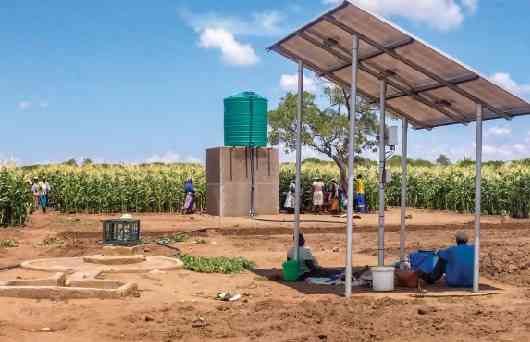
SOVEREIGN wealth funds (SWFs) are state-owned funds that typically invest in global capital markets.
SWFs are investment vehicles set up by governments to invest their surplus/excess capital/surpluses abroad to achieve national development goals.
SWFs are characterised by state-ownership and control, invest in real and financial assets globally, including stocks, bonds, real estate, etc.
Some scholars have argued that SWFs seek to convert physical wealth (often mineral wealth) into financial wealth and preserve such wealth in a trust format for the benefit of multiple generations and manage pools of excess reserves used to support domestic currencies in order to ensure financial stability, as well as provide for some level of fiscal contingency.
The International Monetary Fund (IMF) categorises SWFs broadly into five types:
Stabilisation funds, the primary objective of which is to insulate the budget and the economy against commodity (usually oil) price swings;
Savings funds for future generations, which aim to convert non-renewable assets into more diversified portfolios of assets and mitigate the effects of Dutch disease;
Reserve investment corporations, whose assets are often still counted as reserve assets, and are established to increase the return on reserves;
- Village Rhapsody: How Zimbabwe can improve governance
- Village Rhapsody: Engage men to end gender-based violence
- Village Rhapsody: How Zimbabwe can improve governance
- Zim maize output to drops by 43%
Keep Reading
Development funds, which typically help fund socio-economic projects or promote industrial policies that might raise a country’s potential output growth; and
Contingent pension reserve funds (from sources other than individual pension contributions) for contingent unspecified pension liabilities on the government’s balance sheet.
SWFs all over the world have grown rapidly in terms of the assets under their management. According to the SWF Institute, assets under the management of SWFs reached a record US$12,7 trillion in July 2024 from US$5,9 trillion in September 2013, representing 115,3% increase.
Many of the countries with SWFs are rich in natural resources. The major funding resources for the SWFs are related to commodities’ exports, primarily oil, and gas exports.
However, over the years, more funds were established using an economy’s budget surpluses and foreign exchange reserves, which primarily come from the accumulation of vast budget and current account surpluses.
Examples of these non-commodity countries and economies include China, Korea, Taiwan, Hong Kong, and Singapore. These economies are major net exporters and have accumulated vast foreign reserves over the past decades.
In part, this accumulation was deemed necessary in order to manage their exchange rate systems and defend their currencies from potential speculative attacks.
As the level of foreign reserves grew bigger than that required to defend their currencies, the Asian central banks began to shift some of their reserves to SWFs to achieve the objective of reaping potentially higher returns.
According to the Sovereign Wealth Fund Institute, as at July 2024, there are 30 SWFs on the African continent. The biggest SWF in
Africa is the Libyan Investment Authority (LIA), which was founded in 2006 and has total assets of US$68 billion, while Botswanas Pula Fund is the oldest SWF on the continent, it was founded in 1994 and has total assets of US$4,1 billion.
SWFs on the African continent can be a critical driving force in pursuit of the continent’s economic self-sufficiency and wellbeing if well managed.
SWFs have rapidly grown to become influential actors in the global financial and capital markets. With an estimated cumulative size of US$12,7 trillion as at July 2024, they now surpass the combined financial value of hedge funds and private equity.
SWFs have, however, often been criticised for their lack of transparency and accountability, as well as, the potential political motives behind their investment decisions.
While politicians in countries in which the funds invested generally welcomed the additional financial resources from abroad, they expressed concern about the motivations of investors and possible threats to political, economic, and financial security.
In response to such concerns, the International Monetary Fund (IMF) facilitated formal negotiations or a structured dialogue between SWFs and recipient countries, leading to the development of a set of voluntary principles for SWFs.
An International Working Group of Sovereign Wealth Funds (IWG) was formed in May 2008 to develop a set of principles that properly reflect the investment objectives and practices of SWFs.
The IMF was tasked to provide a secretariat and to support the work of the IWG. Over the subsequent four months, the IWG went about its work, drawing upon SWF good practices and relevant international guidelines, standards, and codes.
IMF staff provided background material and technical inputs and helped facilitate negotiation and consensus building among the IWG members.
In September 2008, a preliminary agreement was reached in Santiago, Chile, on a set of 24 Generally Accepted Principles and Practices (GAPP), also known as the ‘Santiago Principles’ (the principles).
The IWG presented these principles to the IMF’s policy-guiding committee, the International Monetary and Financial Committee, on October 11, 2008.
This marked the first time that the SWFs, along with their owner countries, had set out a comprehensive framework for their legal, governance, and institutional structures, and their investment policies.
The output was a good example of multilateral collaboration, with the IMF acting as broker to facilitate development of consensus among the SWFs.
The Santiago Principles set out a broad and comprehensive framework, and reflect a strong unanimity of views among the SWFs and their governments.
The principles provide a clearer understanding of the institutional framework, governance, and investment operations of SWFs. They also provide greater clarity about the provision of information to the owners of the funds and to regulators in recipient countries.
The Santiago Principles are not regulations, but rather a voluntary general code to inform domestic regulation and investment policies.
The Santiago Principles cover three main areas:
Legal framework, objectives, and coordination with macroeconomic policies;
Institutional framework and governance structure; and
Investment and risk-management framework.
The Santiago Principles consists of 24 generally accepted principles and practices (GAPP) voluntarily endorsed by the International Forum of Sovereign Wealth Funds (IFSWFs) members.
The Santiago Principles promote transparency, good governance, accountability and prudent investment practices whilst encouraging a more open dialogue and deeper understanding of SWF activities.
The principles are, subject to home country laws, regulations, and requirements. Elements of transparency and disclosure are integrated in all sections of the Santiago Principles to ensure accountability.
The transparency of SWFs is generally defined as the level of information disclosure to the investors, the relevant administrative departments of the recipient country, stakeholders or the public in the operation of SWFs, concerning basic corporate information, management information, risk management and investment information.
A number of methods for measuring the transparency of SWFs have been devised, namely: the Linaburg-Maduell of the SWFI, the Worldwide Governance Indicators of Kaufmann, Kraay and Mastruzzi and the Truman-Dawson scoreboard of the Peterson Institute.
The Truman Scoreboard and the Linaburg-Maduell Transparency Index (L-M Index) use an index to measure the transparency of each fund, and these indexes are calculated from a series of yes /no questions.
The sum of the scores for all the answers about each fund represents the index for transparency of that fund.
- Chitambara is a scholar, who is based in Harare. These weekly New Perspectives articles, published in the Zimbabwe Independent, are coordinated by Lovemore Kadenge, an independent consultant, managing consultant of Zawale Consultants (Pvt) Ltd, past president of the Zimbabwe Economics Society and past president of the Chartered Governance & Accountancy Institute in Zimbabwe (CGI Zimbabwe). — [email protected] or mobile: +263 772 382 852.











